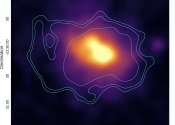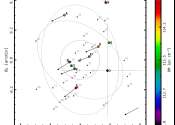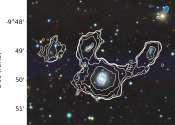Hydrogen recombination found to be most plausible explanation for high levels of energy in stellar superflares
Although their primary purpose is to look for exoplanets, observatories like the Kepler Space Telescope and the Transiting Exoplanet Survey Satellite (TESS) have supplied a vast amount of data on stellar flares, detected ...









